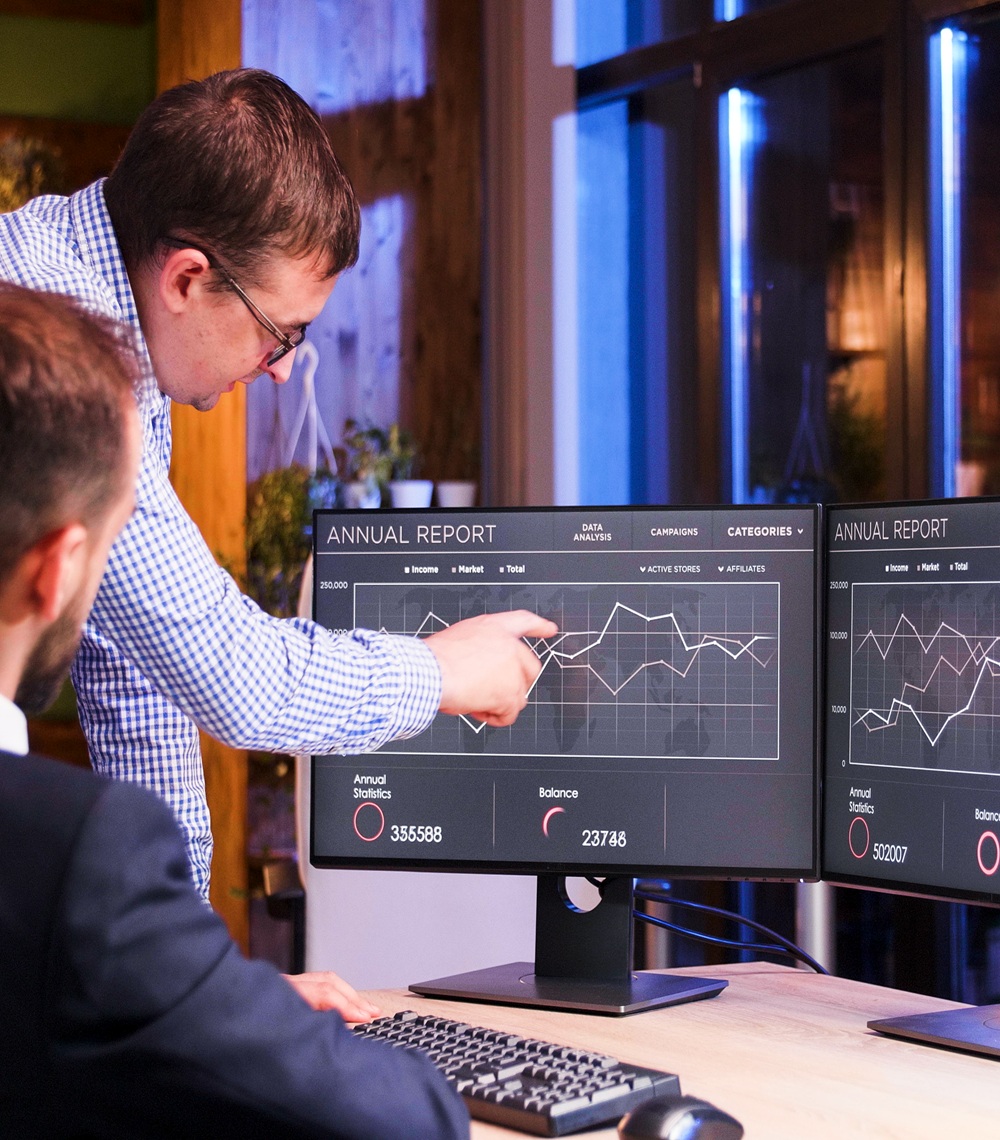
Data engineering is all set for new trends and developments that will define and redefine how organizations undertake data operations. A couple of years back, data had already become a leading force in decision-making in almost every industry. From Finance to IT to HR, there’s seldom any department that is not harnessing the power of data in such organizations.
In a world where we'll be generating 463 exabytes per day by 2025, working as a data engineer can allow you to have a real impact. ML and deep learning fields cannot prosper without data engineers processing and directing the data. While ripples of the past will continue generating waves in the future, it would not be wrong to expect some newer developments as well.
Here are the significant trends that you will witness in 2023:
1.SQL
The most common and easy-to-use open-source programming languages used by big data engineers are R and Python, but SQL has been gaining popularity for a while now. It will continue to be the hot property for big data engineers as we enter 2023. SQL has made data operations fast and easy. The dependency on technology is so pervasive that every data engineering job posting requires you to be an expert in SQL. Not only that, every mainstream data product has some interoperability or dependency with SQL.
Data engineers frequently use SQL as one of their primary tools for defining business logic, extracting crucial performance indicators, and building reusable data structures. However, there are other varieties of SQL that data engineers should take into account, including Basic, Comprehensive Modelling, Efficient, Big Data, and Programmatic. The process of learning SQL entails gradually mastering these many forms.
If you still have not considered growing your SQL expertise, it’s high time to act if you wish to have a career as a data engineer.
Data operations will continue to depend on SQL for the foreseeable future.
2. Data Quality and Governance
Data has increased both in terms of volume and complexity. This development has seen the emergence of quality and governance issues that companies usually find hard to solve. While many have tried, none has seen the scale of adoption that one would expect with such a widespread problem. It might be that there’s a lack of solution validation, or organizations are primarily concerned about something else altogether.
Whatever the case, the future will see new SaaS companies offering to solve these issues.
3. Git for data
Version control is not limited to software development alone. Data engineering teams are expecting something similar that ensures a cross-organization version control system specific to data operations. A few such solutions have seen the light of day with a positive response.
As we step into 2023, the version control solutions for data teams will likely pop up as a new product segment.
4. Upsurge in ML integrations
Organizations are integrating machine learning at various touchpoints to draw the most out of data. The use of AI has become much more common than before, and the adoption pace will only increase in 2023.
Such comprehensive integration was unthinkable in the past, given various data and tech-related barriers which stand breached now. All the related data operations have become much more affordable with the standardization and commoditization of ML solutions.
ML will continue to become cost-effective for organizations of all sizes and scales.
5. Business Members to get data-savvy
Companies are currently using their data warehouses to power their BI tools. While this makes their decisions more data-driven, mostly, it is the analytics tools that use business intelligence tools. Business members usually operate using CRM and other such products. If you wish for your organization to be a truly data-driven one, it is quintessential that your business team has direct access to the data too. Your data engineering teams should employ reverse ETL tools to facilitate this data-centricity in your business.
Reverse ETL will see increased adoption as businesses race to become even more data-centric.
6. ML comes to SQL
With RedShiftML providing good momentum in this direction, this trend will become quite mainstream soon. Data teams primarily use SQL and other techs enabled by it for data storage. However, machine learning support via any SQL interface is quite lacking. Thus, to run ML operations on data, data scientists must transfer data from a data warehouse to an environment that supports such operations. Once the data is there, they might need to perform additional data processing steps. Honestly, this is a challenge that can be avoided by bringing ML to SQL.
With the introduction of RedShiftML and the corresponding trend of bringing ML to data storage, things are looking bright for data engineers.
7. Real-time Data
Data is getting commodified and multidimensional in various aspects. Now, its freshness is a top concern as well. And nothing is as fresh as real-time data. Organizations can today collect and analyze real-time data they source via embedded software and IoT devices. Real-time analytics has made the services more personalized and sophisticated than ever before. This approach has made decision-making more robust while allowing ML models to train and evolve at unprecedented rates.
Real-time data collection and analysis will become second nature to consumer organizations.
8. SaaS over Open Source
Organizations prefer open-source software offerings due to their cost-effectiveness. However, Software companies are making their SaaS products affordable while offering additional developmental and infrastructure support at a low cost that open source lacks. Result? Companies can solely focus on their data operations while leaving data engineering to SaaS companies. They can perform analytics and data operations at scale without worrying about anything else.
Thus, 2023 will witness companies shifting their preferences from open source to SaaS.
9. The synergy between developers and data teams
As developers start developing data applications, they have realized that data engineering is a profession in its own. Expert data scientists have skills that developers cannot develop overnight. That is why both engineering and data teams are critical for the organization to work seamlessly. The emergence of AI-driven applications and data-driven decision-making has made cooperation even more vital.
Hence, this year, we should see several organizations restructure to bring greater synergy between their software development and data engineering operations.
10. Specialization > Generalization
As data operations become more integrated into business organizations, newer roles are fast emerging. Developers are working on novel tools to make data pipelines more robust than ever before. Specialized tools and roles have started to emerge. An essential factor contributing to this trend is how businesses are adopting software engineering practices in data ops. This year, newer and more specialized branches of data engineering will emerge.
Data engineers will become more specialized in the tools and stages of data pipelines they wish to focus on.
11. Decentralized data governance
Centralized data operations are a norm in big organizations. However, this has led to the much-dreaded data bureaucracy that not every team appreciates. Even though centralized data crews will have an indispensable role to play, other teams will themselves become responsible for handling data that is relevant to them. However, with so many interdependent variables, data ownership will become a problem that businesses must address before moving ahead with a decentralized approach.
Decentralized data governance in organizations will witness more progress than it has in the past.
12. SaaS as a data product
Software products are increasingly turning into data products as well. Development companies are helping fulfill customer demands by incorporating data-related capabilities into their software products. Their customers can track their productivity and other KPIs directly from the software product. This added analytics aspect to SaaS has made it possible for users of these products to progress in their duties efficiently. As businesses become more data-centric, and their data operations increase, the demand for such SaaS Products will only increase.
Not only that, in the transform layer of the ETL process, newer abstractions are emerging in the form of metrics layers, A/B testing frameworks, and other applications. This shift is a new development but will take on a more concrete direction soon. In the coming years, more SaaS companies offering computational frameworks will enter the market.
Such customer-facing data products in the form of SaaS will continue to grow in the coming years.
13. Point-in-Time Correctness challenge
Point-in-Time correctness is a real challenge in practical ML applications. When time-dependent data is input to an ML model, you must ensure that future data does not leak into the model before its registered timestamp. If anything of that sort happens, it will increase the training accuracy of the model while hurting its predictive accuracy. That is why each data point and feature in such scenarios must be time-stamped to avoid any data leakage.
Point-in-Time correctness will continue to challenge data engineers in the foreseeable future.
14. Data Infrastructure as a Service
Having an in-house data infrastructure has several technical, scalability, and resource-related issues. It is a strong deterrent for businesses looking to switch to a data-driven approach. One key reason has been the lack of human resource availability in data science. It is so, as skilled data engineers are still a rare species. Cloud data infrastructure with outsourced teams can help organizations out of this bind.
In this regard, the emergence of cloud-based, fully-managed services like data warehouses/data lakes has proved revolutionary. With products like Snowflake and Databricks, the trend is on the rise.
Thus, cloud-based data infrastructure as a service will become more specialized, diverse, and mainstream with time.
15. Accessibility to the modern data stack
The data engineering SaaS tools have played an instrumental role in making the modern data stack accessible to organizations of all scales. Businesses can now spend as they go, according to their needs, budget, and goals. Not only that, but the SaaS services that form the data stack also have seamless interoperability and compatibility support. It means that they collectively give you a feeling of a coherent data environment. They stand tall on all regulatory compliances enabling businesses to focus solely on their business goals.
With increasing competitors in the market and evolving data pipelines, accessibility to modern data stacks will only increase.
In a nutshell…
Data Engineering has grown by leaps and bounds in recent years, but it is still in a nascent stage. It is still evolving, which is highly visible in the newly emerging roles and terminologies that hardly have an accepted definition. That is why new trends and best practices will continue to form and go. However, the one trend we are sure will keep growing is the increased integration of data into every aspect of business decisions, product evolution, and consumer behavior.
































